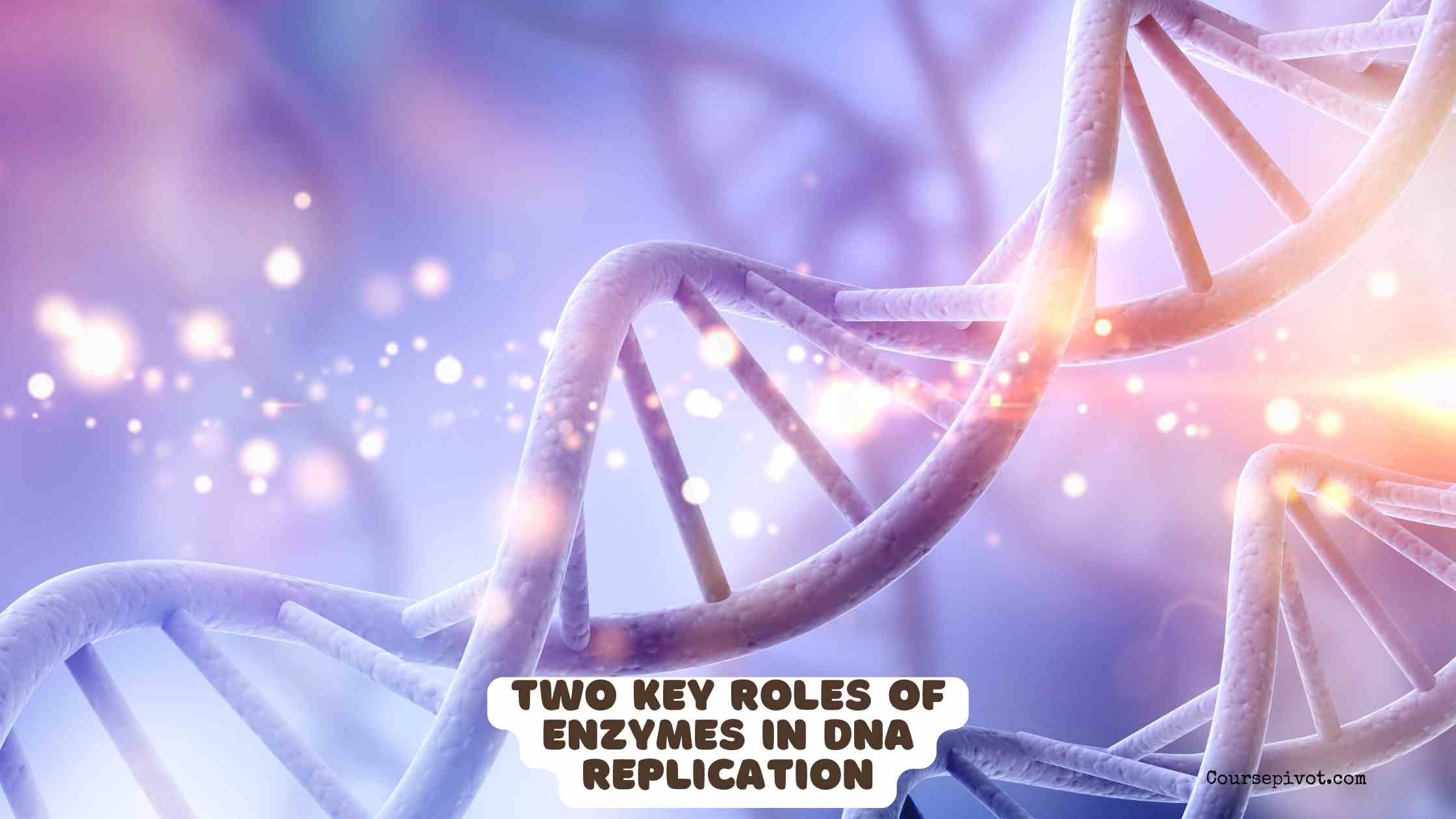
Two Key Roles of Enzymes in DNA Replication
DNA replication is a remarkable process that ensures every cell in your body carries an identical genetic blueprint. It’s like a molecular photocopier, duplicating DNA with precision before cells divide. Enzymes, the protein powerhouses of biology, orchestrate this complex dance. Two critical roles they play are unwinding the DNA double helix and synthesizing new DNA strands.
Table of Contents
The article explores these two key roles of enzymes in DNA replication, breaking down how they work and why they’re essential for life.
Why Enzymes Are Central to DNA Replication
DNA replication requires speed, accuracy, and coordination to copy billions of base pairs without errors. Enzymes act as specialized tools, each with a specific job to ensure the process runs smoothly. Without them, the double helix would stay locked, and new strands couldn’t form. Understanding these roles reveals the elegance of life’s molecular machinery.
Let’s dive into the two key enzyme roles—unwinding the DNA double helix and synthesizing new strands—with clear explanations and examples.
Role 1: Unwinding the DNA Double Helix
Enzyme: Helicase
The first step in DNA replication is opening the tightly coiled double helix to expose the genetic code. Helicase is the enzyme that does this heavy lifting, acting like a molecular zipper to unwind the DNA.
How It Works
Helicase breaks the hydrogen bonds holding the two DNA strands together, splitting them into single strands at a starting point called the origin of replication. This creates a “replication fork,” a Y-shaped region where each strand serves as a template for new DNA. Think of helicase as unzipping a jacket to reveal the pattern inside, making it accessible for copying.
For example, in a human cell with 3 billion base pairs, helicase works at thousands of replication forks simultaneously, ensuring the entire genome is accessible. Other enzymes, like single-strand binding proteins, stabilize the unzipped strands to prevent them from snapping back together.
Why It Matters
Without helicase, the DNA strands would remain locked, halting replication. Its precision ensures the genetic code is available for copying, setting the stage for accurate duplication.
Role 2: Synthesizing New DNA Strands
Enzyme: DNA Polymerase
Once the DNA is unwound, DNA polymerase takes over to build new strands, copying the exposed templates to create identical DNA molecules.
How It Works
DNA polymerase adds nucleotides—the building blocks of DNA (A, T, C, G)—to a growing strand, matching each nucleotide to its complementary base on the template (A pairs with T, C with G). It works in a 5’ to 3’ direction, extending a primer (a short RNA segment laid down by another enzyme, primase) to form a continuous strand on the “leading” template and shorter fragments (Okazaki fragments) on the “lagging” template.
For instance, if a template strand reads “ATCG,” DNA polymerase builds a complementary strand, “TAGC,” with pinpoint accuracy. It also proofreads as it goes, correcting mismatched bases to minimize errors, achieving an error rate as low as one in a billion.
Why It Matters
DNA polymerase ensures the genetic code is faithfully copied, preserving your unique traits across generations of cells. Without it, new DNA strands couldn’t form, and cells couldn’t divide or function.
How These Roles Work Together
Helicase and DNA polymerase are like a dynamic duo. Helicase unzips the DNA, creating single-stranded templates, while DNA polymerase reads those templates to build new strands. Other enzymes, like primase and ligase, support them—primase lays primers for DNA polymerase to start, and ligase joins Okazaki fragments. This teamwork ensures replication is fast (about 1,000 bases per second in humans) and accurate, copying the entire genome in hours.
For example, during cell division in your skin, helicase unwinds DNA in multiple spots, and DNA polymerase churns out new strands, ensuring each new cell gets an identical DNA copy. This process underpins growth, repair, and reproduction.
Why These Enzyme Roles Are Critical
These two roles—unwinding and synthesizing—are non-negotiable for life. Without helicase, DNA remains inaccessible; without DNA polymerase, no new strands can form. Errors in either process can lead to mutations, potentially causing diseases like cancer. Their precision, backed by other enzymes, keeps your genetic code intact, from a single cell to a full organism.
Understanding these roles also highlights why DNA replication is a target for medical research, like cancer therapies that block helicase or polymerase in rogue cells.
Practical Tips for Learning More
Here’s how to deepen your understanding of DNA replication enzymes:
- Visualize it: Watch animations on YouTube (search “DNA replication animation”) to see helicase and polymerase in action.
- Simplify terms: Think of helicase as the “unzipper” and DNA polymerase as the “builder” to remember their roles.
- Explore biology resources: Sites like Khan Academy offer free lessons on DNA replication.
- Connect to real life: Research how enzyme malfunctions link to genetic disorders for context.
- Quiz yourself: List the steps of replication and name the enzymes involved to reinforce learning.
These steps make the science approachable and engaging.
Things to Avoid
Don’t confuse helicase with topoisomerase, which relieves DNA tension but doesn’t unwind the helix. Avoid oversimplifying DNA polymerase’s role—it doesn’t just build but also proofreads. Don’t assume replication is error-free; while rare, mistakes happen and matter. Lastly, steer clear of outdated sources—newer research refines our understanding of these enzymes.
Tailoring to Your Curiosity
If you’re a student, focus on memorizing helicase and DNA polymerase for exams, using mnemonics like “Helicase unzips, polymerase builds.” If you’re a science buff, dive into how these enzymes vary across species (e.g., bacteria vs. humans). For health enthusiasts, explore how these roles relate to genetic testing or cancer research. Adjust based on your interest level.
Read Definitions and Functions of All Cell Organelles in Animal and Plant Cells
Key Takeaways
The two key roles of enzymes in DNA replication—unwinding the double helix (helicase) and synthesizing new strands (DNA polymerase)—are the backbone of genetic duplication. Helicase opens the DNA, exposing templates, while DNA polymerase builds accurate copies, ensuring cells inherit identical DNA. Together, they drive life’s continuity with stunning precision. By grasping these roles, you unlock a deeper appreciation for the molecular magic that keeps us going.
Cite this article
You can copy and paste your preferred citation format below.
Martin, L. & Arquette, E.. (2025, September 25). Two Key Roles of Enzymes in DNA Replication. Coursepivot.com. https://coursepivot.com/blog/two-key-roles-of-enzymes-in-dna-replication/



